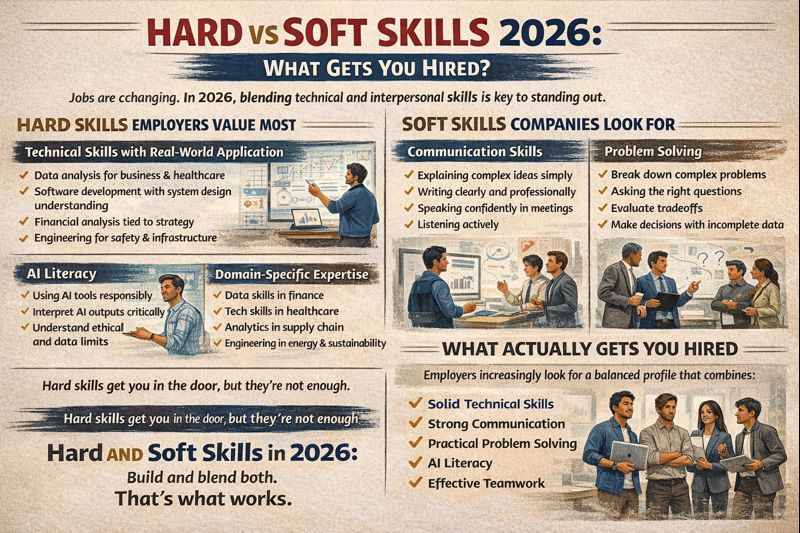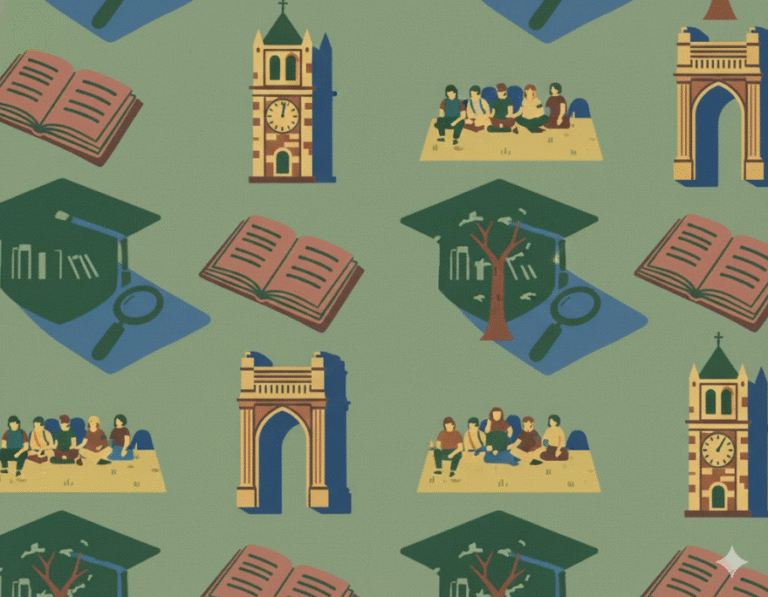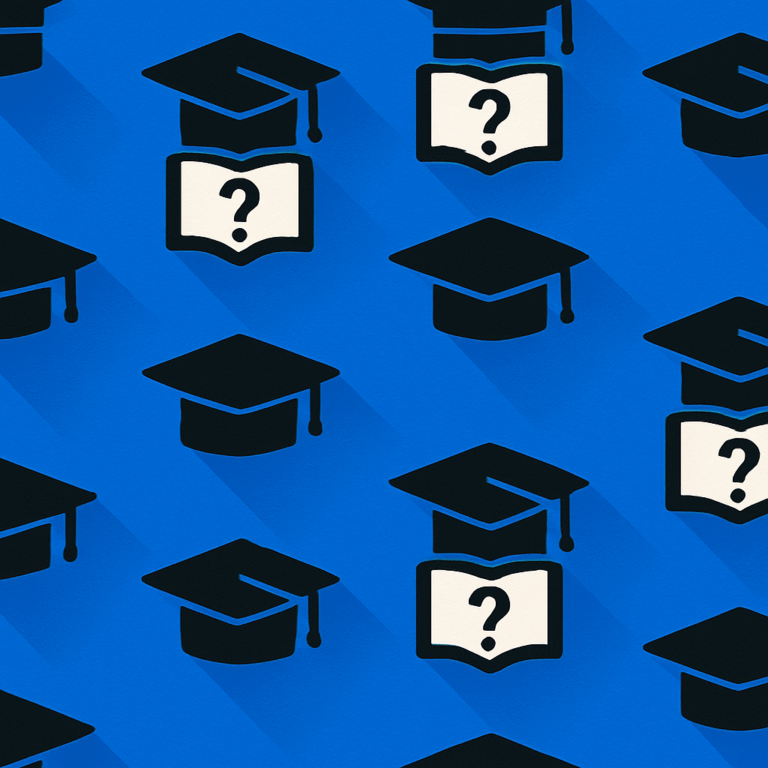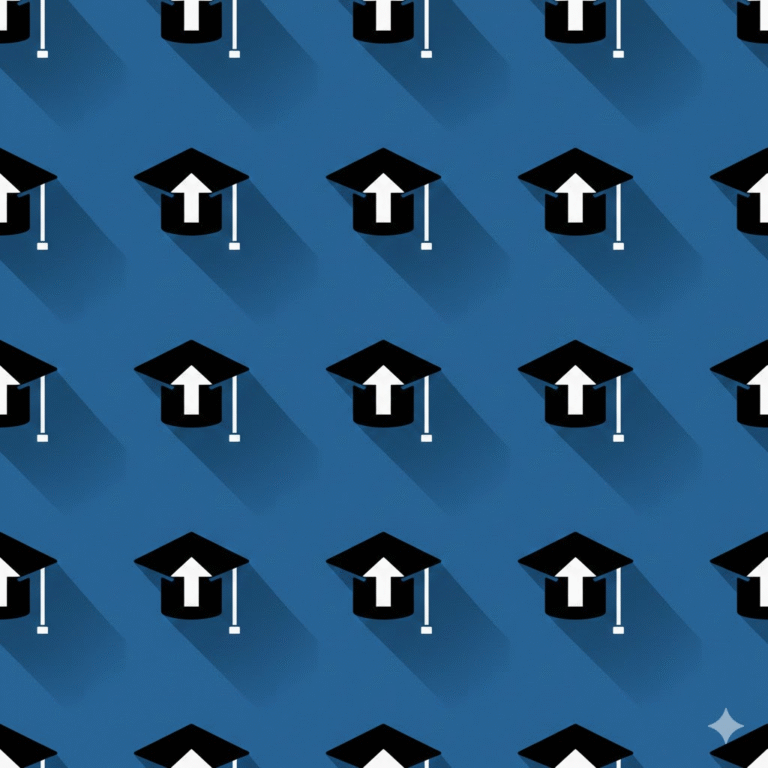A student visa for the USA is the first step on your exciting journey to a world-class education. Obtaining a student visa to the United States opens up a world of opportunities for Indian students.
The number of student visas for the USA from India reached a record last year. Indian students received a whopping 130,839 F-1 visas, a significant 14% increase compared to 2022. This marks the second consecutive year that India has secured the top spot for most F-1 visas issued by the US.
The total number of Indian students has also shot up to almost 2.7 lakhs.

If you are reading this article, you are right in time to apply for a visa for the Fall 2024 intake.
We’ve created this handy guide to help you find out how to get a student visa for the USA.
US Student Visa in 2025
First, let’s define what a visa is. Those who are not used to foreign travel might not have a clear idea of what visas entail.
A visa is an official permission granted by a country’s government to an individual. It allows them to enter, stay, or leave that country for a specified period. A visa is not to be confused with a passport, which is a proof of citizenship in foreign countries. when you are abroad.
There are many types of visas. A student visa allows you to study, a tourist visa lets you travel, and a work visa allows you to work and earn a living.
Since the US is the most preferred destination for higher education study and work, the number of visa applications to the US is the highest. To ensure a successful application, it’s important to understand the rules that apply to Indian students. There is constant congestion at various US consulates. You need to understand the rules before you apply for student visa USA
We shall get to the types of US student visa later.
Here are the latest changes to the US visa policy for Indian students.
Updates about student visa for USA from India in 2025:
- Advance Visa Issuance: Since February 2023, the U.S. Department of State has permitted permits consular officers to issue F and M student visas up to 365 days before the program start date, previously limited to 120 days. However, students can enter the U.S only 30 days before prior to the program start date.
- Increased Visa Processing Fees: Starting June 2023, student visa fees for the USA, including exchange visitor visas, rose from $160 to $185.
- In-Person Interview Waivers Extended: The State Department has extended the waiver of in-person interviews for F, M, and J student visas. This reduces visa processing wait times. In-person interviews may still be required on a case-by-case basis.
Requirements for Student Visa in USA
To be eligible for a student visa to for the USA from India, all applicants must meet the following mandatory criteria as established by the U.S. Department of State.
Valid Passport
You must possess a valid Indian passport from your home country that will remain valid for at least six months beyond the visa period. If your student visa expires on July 31, 2026, the passport must be valid till January 31, 2027.
Form DS-160 Confirmation
DS-160 stands for Online Nonimmigrant Visa Application. It’s an electronic form that you must complete as part of the application process.
You are required to submit the confirmation page for the completed Form DS-160 electronically.

Application Fee Payment
You need to pay the non-refundable student visa fees for the USA. Currently, it is $185.
Photograph
You must upload a recent passport-sized photograph must be uploaded during the online DS-160 application process. In the event of an upload failure, you will be required to bring a printed copy of the photograph to your interview.
School Acceptance Documentation
You must present either a Form I-20 (for F-1 and M-1 visas) or a Form DS-2019 (for J-1 visas) issued by the US educational institution you intend to attend. Both you and a designated school official must sign this document.
<h3″>Financial Support Documentation
You are required to provide sufficient evidence of sufficient finances. This includes all educational expenses, living costs, and travel costs associated with your education studies in the United States.
Proof of Intent to Return Home Departure Intent
You Applicants must present documentation that establishes your their intention to depart the United States upon the completion of their authorized academic program.
Academic Records
You must submit official transcripts, diplomas, degrees, or certificates from all educational institutions previously attended. Additionally, standardized test scores (if required by your chosen US institution) must be included in your application package.
Read More: Study in USA 2024
Types of USA Student Visa
The United States offers three primary visas types for international students: F-1, M-1, and J-1 visas. Each category caters to different educational goals and comes with its own regulations.
Here’s a breakdown of each type:
- F-1 Visa (Student Visa): This is the most common visa type for international students pursuing academic degrees at accredited US colleges, and universities.
- To qualify for an F-1 visa, you must be enrolled full-time in a qualified program.
- F-1 visa holders are generally eligible for on-campus employment and qualify for Optional Practical Training (OPT).
- M-1 Visa (Vocational Student Visa): This visa is designed for students seeking non-academic or vocational training programs in the US, such as cosmetology, culinary arts, or automotive repair.
- M-1 visas require the students to be part of an approved vocational program.
- M-1 visas generally do not allow for on-campus or off-campus employment.
- J-1 Visa (Exchange Visitor Visa): This visa category is for participants of in exchange programs sponsored by the US government, and educational institutions. J-1 visa programs can cover a wide range of fields, including study, internships, teaching, and research.
- Eligibility for a J-1 visa depends on the specific program a student is enrolled in you are participating in.
- Work authorization for J-1 visa holders varies depending on the program type.
How to Apply for a US Education Visa?
Applying for a U.S. education visa, typically an F-1 visa for academic purposes or an M-1 visa for vocational education studies, involves a multi-step process:
Apply and Get Accepted to a SEVP-Approved School
Before applying for a student visa to for the USA from India, you must be accepted by a school approved by the Student and Exchange Visitor Program (SEVP). You cannot enter on a student visa and then secure admission.
Pay the SEVIS Fee
After acceptance, you’ll receive Form I-20 (for F-1 or M-1 visas) or Form DS-2019 (for J-1 visas). After that, you will pay the Student and Exchange Visitor Information System (SEVIS) fee.

Complete Visa Application
Fill out the Nonimmigrant Visa Application, Form DS-160. This form is available online at the Consular Electronic Application Center website.
Schedule and Prepare for Your Visa Interview
Schedule an interview at the nearest U.S. embassy or consulate. The wait time for an interview appointment varies by location, visa category, and season.
Gather Required Documentation
This is a list of the documents required for USA student visa interview:
- A passport valid for travel to the United States.
- Form DS-160 confirmation page.
- Student visa fees for USA fee payment receipt.
- Photo, in the format explained in the photograph requirements.
- Form I-20 (for F-1/M-1 visa) or Form DS-2019 (for J-1 visa).
- Additional documents, such as academic transcripts, diplomas, standardized test scores, and evidence of financial support.
Attend the Visa Interview
During the interview, a consular officer will determine whether you qualify for a student visa for the USA from India. They will review your documents and ask questions about your study plans, ability to cover educational and living expenses. They will also ask about your intent to return to your home country after your studies.
Visa Approval and Issuance
If your visa application is approved, you may need to pay a visa issuance fee (if applicable), and you’ll be informed about the passport return process.
Travel to the US
Remember, having a visa does not guarantee entry into the United States. It only allows you to travel to a U.S. port-of-entry and request permission to enter the U.S.
This is a short summary of the process:
- Secure admission
- Apply through Form DS-160
- Keep passport and photo handy
- Appear for interview
- Get student visa
- Travel to USA
Where to apply?
This is the official guide of the US State Department for F, M and J visa application.
Apply for visa here For an interview you have to visit the nearest consulate or embassy.
Here are the addresses for the U.S. Consulates and the U.S. Embassy in India:
U.S. Embassy in New Delhi:
- Address: Shantipath, Chanakyapuri, New Delhi – 110021
- Telephone: 011-2419-8000
U.S. Consulate General in Chennai:
- Address: Gemini Circle, Chennai 600 006
- Phone: 044-2811-2000
U.S. Consulate General in Hyderabad:
- Address: Survey No. 115/1, Financial District, Nanakramguda, Hyderabad, Telangana, 500032
- Phone: 040-6932-8000
U.S. Consulate General in Kolkata:
- Address: 5/1, Ho Chi Minh Sarani, Kolkata – 700071, West Bengal, India
- Phone: 033-6827-2400
U.S. Consulate General in Mumbai:
- Address: C-49, G-Block, Bandra Kurla Complex, Bandra East, Mumbai 400051
- Phone: 022-2672-4000
For the moment interviews are paused. During the Covid pandemic the backlog had been 1000 days. Now it is 250 days.
This is a dynamic situation and mandatory visa interviews might return at any time. You should keep yourself informed.
Top universities to study in the US
The United States is renowned for its academic prowess. This is evident from the remarkable track record in the Nobel Prizes. With over 400 Nobel Laureates, the US has produced the highest number of Nobel Prize winners of any nation.
Its esteemed institutions are some of the globe’s most prestigious universities.
Here’s a quick look at some of the top US universities:
- MIT (Massachusetts Institute of Technology): Pioneering research and innovation in STEM fields (Science, Technology, Engineering, Math). Focuses on hands-on learning and tackling real-world challenges. Notable alumni include Nobel laureates, Rhodes Scholars, and entrepreneurs.
- Harvard University: Synonymous with academic excellence and intellectual rigor. Offers a wide range of programs across diverse disciplines. Renowned faculty, state-of-the-art facilities, and a rich history dating back to 1636.
- Stanford University: Celebrated for its innovative spirit, entrepreneurial culture, and cutting-edge research, especially in Silicon Valley. Provides unparalleled opportunities for internships, research, and career advancement. Encourages students to explore diverse interests and address global challenges.
- UC Berkeley: Renowned for academic excellence, vibrant campus life, and commitment to social justice. Offers a diverse array of programs across various disciplines. Renowned faculty, cutting-edge research facilities, and strong industry ties make it a top choice for a transformative education.
- University of Chicago: World-renowned for intellectual rigor, vibrant scholarly community, and interdisciplinary inquiry. Focuses on critical thinking, debate, academic freedom, and undergraduate research. Small class sizes and close faculty mentorship foster a culture of innovation and inquiry.
With a plethora of universities and programs on offer it is natural to feel confused.
To cut the clutter visit SelectRight today.
SelectRight assists students in discovering suitable Master’s programs at the best institution.
These are the core features of SelectRight:
- AI-Powered Recommendations: The platform uses artificial intelligence to match students with top programs that align with their goals.
- Extensive Database: With over 20,000 programs and 8 million data points, SelectRight offers a comprehensive selection of options.
- Vast Options: Do you want to study political science or robotics? SelectRight is domain agnostic and provides information for both STEM as well as humanities and liberal arts majors.
15,000+ global programs. Let SelectRight guide you to the best fit. Learn more.
Education loans for USA studies
Financing a US education can be a challenge. With average tuition fees for international graduate students around $39,000 many find it difficult to afford.
Despite the cost, the US remains a popular choice, particularly among Indian students.
The only option is education loans for studying in the USA.
Every public sector bank and most private sector banks offer education loans. Several NBFCs have also jumped into the fray.
The following table offers a comparison of education loans in India. Note – interest rates can change.
| Bank/NBFC | Interest Rate Range | Loan Type | Loan Amount Range |
| State Bank of India | 8.30% to 11.50% | Need-based term loan up to 15 years. | Up to INR 1.5 Crore |
| Punjab National Bank | 8.55% to 11.25% | Need-based term loan up to 15 years. | Up to INR 1 Crore |
| Bank of Baroda | 9.10% to 12.45% | Term loan need-based funding. | Up to INR 80 Lakhs |
| ICICI Bank | 9.50% onwards | Term loan up to INR 1 crore for domestic, and INR 2 crore for international studies. | Up to INR 2 Crore |
| Bank of India | 8.25% to 11.60% | Term loan need-based financing. | Up to INR 1 Crore |
| Bank of Maharashtra | 9.20% to 11.05% | Term loan up to INR 10 lakh in domestic and up to INR 20 lakh for abroad studies. | Up to INR 20 Lakhs |
| Central Bank of India | 8.30% to 11.25% | Term loan up to INR 50 lakh. | Up to INR 50 Lakhs |
| Axis Bank | 13.70% to 15.20% | Customizable loans with flexible repayment options. | Up to INR 40 Lakhs |
| Kotak Mahindra Bank | Up to 16.00% | Custom solutions based on course and institution. | Varies |
| Canara Bank | 7.30% to 9.30% | Need-based term loan. | Up to INR 40 Lakhs |
| Mpower Finance | Starts from 8.00% | No collateral, cosigner-free loans. | Up to $100,000 |
| Prodigy Finance | Variable | Borderless credit, based on future earning potential. | Up to 100% of tuition fees |
Securing an education loan can feel like navigating a maze.
Intricate details like interest rates, repayment grace periods, late fees, and collateral requirements all play a role.
The process can be overwhelming. You need to perform extensive research to compare loan providers.
This is where FundRight steps in.
We bring you easy-to-repay loans that will save you lakhs. Not only that, we also offer expert advice for you to get the best loan possible.

FundRight makes an education loan to the USA as easy as 1-2-3
- Register on FundRight
- Create a profile
- Look through the offers from our 15+ partner banks and NBFCs
- Submit documents once
- Wait for the best loan offer
Okay that was 1-2-3-4-5 but it still is better than visiting a dozen branches and filling up forms in triplicates.
Also Read: Education Loan for USA for Indian Students [Explained]
FAQs about Student Visa for USA
1. What is SEVIS?
SEVIS, or the Student and Exchange Visitor Information System, is a database managed by the U.S. Department of Homeland Security (DHS). SEVIS tracks and monitors nonimmigrant students and exchange visitors.
2. Does a visa give right of entry?
No. A student visa for the USA from India is a preliminary approval. Holders of a US visa still require approval at the port of entry. CBP officers have final authority to grant or deny admission.
But worry not. A student with admission at a US university is not denied entry unless they have done something heinous.
3. How long is a student visa valid in the USA?
The validity period of a US student visa (F-1 visa) generally does not exceed 5 years. However, the actual duration is linked to your program length.
If your program is less than 5 years, your visa might only be valid for the program length.
You can apply for a renewal if your program extends beyond the initial visa validity period.
4. What is the I-20 form?
The I-20 form, is also known as the Certificate of Eligibility for Nonimmigrant Student Status. It is issued by Student and Exchange Visitor Program (SEVP)-approved schools.
The I-20 form verifies that you have been accepted into a legitimate US educational institution.
Information from the I-20, such as your SEVIS ID and program start date, is essential for completing the US student visa application.
5. What is evidence of financial ability?
Evidence of financial ability for a U.S. student visa involves showing that you or a sponsor has sufficient funds to cover:
– Tuition
– Living expenses
– Books
– Travel
during your study period financial documents for student visa USA can include bank statements, sponsorship documentation, financial aid letters, and scholarship letters.
















